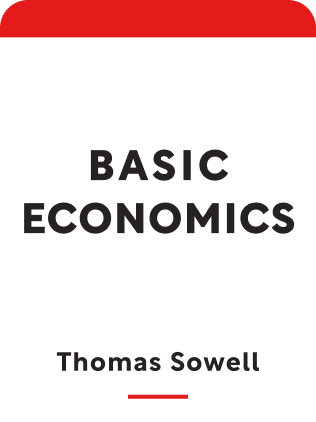

This article is an excerpt from the Shortform book guide to "Basic Economics" by Thomas Sowell. Shortform has the world's best summaries and analyses of books you should be reading.
Like this article? Sign up for a free trial here .
What are monopolies? Why are they harmful to economies?
In short, a monopoly exists when a specific person or organization is the only supplier of a particular good or service. This causes a market distortion and reduces consumer welfare. Monopolies face little to no economic competition to produce goods, have few substitutes that consumers can use instead, and are able to price well above what an efficient market would otherwise produce.
In this article, we’ll explain the characteristics of the monopoly market structure and discuss how monopolies are maintained.
The Cost of Monopolies
In a competitive market, consumers can take prices for granted. They know that they are not being charged outlandish prices leading to high profits for businesses – if this were really the case, competitors will soon arrive who will compete the profits down to a rate of return similar elsewhere in the economy. Water finds its level.
However, monopolies, oligopolies, and cartels reduce competition, control prices, and thus distort markets. The monopolist would earn a rate of return necessary to attract the capital required, but no competition arises to drive down prices.
The real harm of monopolies is not consumers paying more for goods – within an economy, this is simple redistribution of wealth. Rather, at the higher artificial price, fewer goods are demanded and produced than at a lower market price. Thus, a monopolist produces less output with the same available resources.
For instance, in many cities the government supports a monopoly on taxicabs by limiting licenses and setting prices. This artificially limits the number of drivers; people who would be willing to drive at market rates are prevented from doing so, finding other work of lesser value. Furthermore, the higher price of cab rides reduces the number of rides and overall consumer standard of living.
Large Companies Are Not Automatically Monopolies
In common parlance, large companies and market leaders are often misconstrued as monopolies. But if a company faces competition to produce the good, has substitutes for its product, or cannot control the price of the good, it is not a monopoly market structure.
Size and economies of scale have been misconstrued as “squeezing suppliers.” A large buyer like Wal-Mart might be able to procure goods at lower prices than a neighborhood family store, and this has sometimes been seen as unfair or anti-competitive.
However, larger buyers actually do lower costs for vendors – through lower overhead per unit, more predictable production schedules, and thus smoother labor management. These cost reductions reflect reduction of use of scarce resources, freeing them for use elsewhere.
The result of such economies of scale may be competitor stores that go out of business when they can’t offer such low prices, but the economy becomes more efficient overall.
Companies With Substitutes Are Not Monopolies
Large players and dominant market share are often targets for anti-trust. Even if a company controls an industry of arbitrary scope, there are always substitutes for the company’s product that limits its influence.
Facetiously, an Indian restaurant has a monopoly on the industry of “Indian restaurants within 2 blocks.” However, there are ready substitutes of restaurants serving other cuisines nearby, Indian restaurants more than 2 blocks away, as well as supermarkets and convenience stores selling food.
Less obviously, the Aluminum Company of America (Alcoa) was the only producer of virgin ingot aluminum in the US. However, it earned only profits of 10% after taxes, and the price of aluminum decreased over time, rather than increased through brute monopoly control. The reason was that Alcoa’s aluminum products could be substituted by steel, tin, or plastics if it raised prices too high. Therefore, it should not be considered a monopoly.
If higher prices for A cause people to buy more of B, then A and B are substitutes.
A company that cannot keep competitors out is not a monopoly, no matter what % market share it currently has.
More examples:
- Despite its size, Microsoft faced substitutes in Linux and Apple operating systems.
- Corn and petroleum, commodities that seem superficially different, can both be made into plastics.
- Golf courses face substitutes in other sports and hobbies.
- A single local newspaper may have local market control, but are substituted by nationally available newspapers and the Internet.
Furthermore, a monopoly of a product in a country may mean little when it’s easy to import substitutes from other countries.
Thus, any argument based on market share or “control” of an industry needs to be carefully examined for substitutes, and the limits of their ability to set prices.
Maintaining Monopolies
In practice, monopolies are hard to maintain without laws to protect monopolies from competition, like licensing requirements. In a market, new entrants would arrive to take share away from the monopolist.
Predatory Pricing
One fear of large companies is that larger players will cut prices to a level that forces smaller competitors to bankruptcy, then raise prices as they become monopolies.
There is scant evidence of this happening in reality. Forcing prices down is a risky strategy, uncertain to recoup the costs in the long run. Further, the bankrupt competitors are now ripe for purchase at bargain rates by new entrepreneurs, who can rebirth the company with lower costs and become a dangerous competitor.
Cartels
Cartels are formed by a group of businesses agreeing among themselves to avoid competition. In practice, individual members of cartels tend to cheat secretly, perhaps by lowering from the cartel price to some customers. This frequently leads to price wars and disbanding of the cartel.
Cartels with clear transparency, where companies check up on each other frequently, tend to last longer.
Regulating Businesses
Governments have passed laws to restrict monopolies, like forbidding price collusion and setting mandatory prices
Ideally, the government sets prices at where they would be in a competitive market, but it is difficult to do this without actually discovering prices through the market. Instead, they try to determine reasonable production costs and set a reasonable profit. However, as previously explored, artificially low pricing can lead to shortages, as California experienced in the 2001 blackouts by forcing a price ceiling on utilities.
Further, regulatory agencies often become polluted in their purpose. They start by overseeing an industry, but then morph to protect industry members through favorable regulation and seek to justify the agencies’ own existence.
- For instance, the Interstate Commerce Commission arose to restrict railroad monopolies, but eventually protected railroads from trucking through pricing and restricting trucking routes. Without this intervention, railroad companies would have complained to the government about the agency’s purpose, threatening the survival of the agency.
- The result was the survival of companies and employment of people that would otherwise have ended, and thus the inefficient allocation of scarce resources to less productive uses.
There is often confusion about what is detrimental to competitors and what is detrimental to competition.
Sometimes actions that force companies to facilitate their competitors seem more like protecting competitors than fostering free competition. Microsoft, after bundling Internet Explorer with Windows, was forced to open access to Windows as a result of anti-trust lawsuits, which seems like a disruption of free competition.
The tradeoffs of anti-trust laws need to be carefully examined instead of applying a blunt hammer. If anti-trust laws become too draconian and companies fear becoming too large, they may limit the scope of their expansion, thus limiting the consumer welfare they can improve. They may also look offshore and invest internationally.
Further, laws to restrict large businesses may limit the efficiency that would otherwise arise with free competition.

———End of Preview———
Like what you just read? Read the rest of the world's best book summary and analysis of Thomas Sowell's "Basic Economics" at Shortform .
Here's what you'll find in our full Basic Economics summary :
- Why we use money, rather than bartering our services with each other
- Why some nations prosper, while others stay poor despite vast natural resources
- How rent control might actually reduce housing supply and quality






